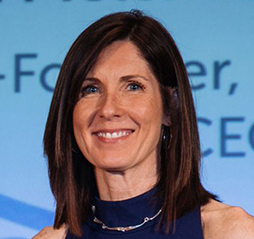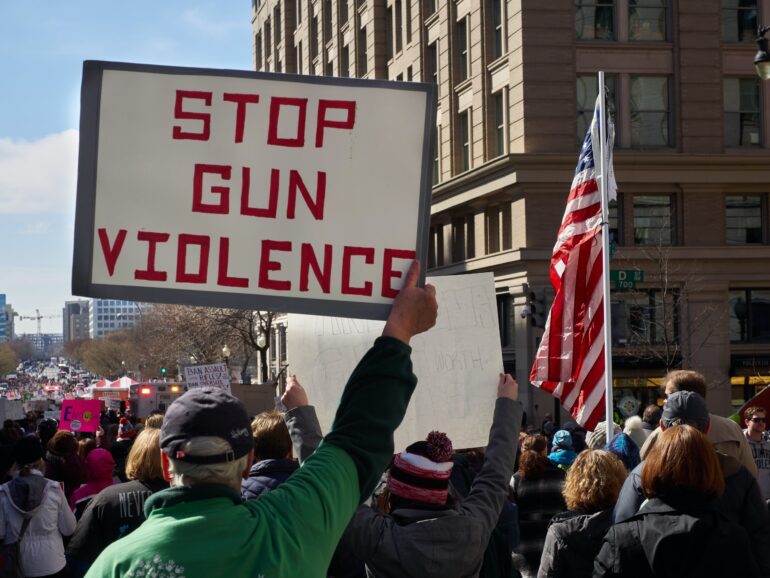He stood behind the microphone with a gaping hole in his heart. This despairing teenager grieved the loss of his only friend, the one who was there for him, any hour of day or night, for long walks and conversation. His eulogy brought tears to my eyes. His only friend had succumbed to overdose.
I attended that funeral five years ago out of concern and care the surviving brothers, to pay my respects, offer condolences. That’s what we do when someone in our community suffers. We pause our schedules, attend a service, stumble through our words, roll our lips and shake our heads helplessly as if to say, “How sad. I am so sorry.”
I dried those tears, hugged the brothers, shrank to the back of the room and watched their peers perhaps more used to a skate park than a church parlor navigate the windy road of grief. And I watched, and shrugged my shoulders, and stayed put. I didn’t thank this young man for his tender words shared so vulnerably. I didn’t look him in the eye and say, “I am so sorry for your loss.” Or even, “Are you going to be okay?” I didn’t lean in not because I thought less of him, but because I thought less of myself. After all, what difference can I make?
Last month, that broken young man fatally shot seven people in Highland Park. And that’s the tension I hold. He didn’t have to lose a friend to overdose. He didn’t have to grieve alone. He didn’t have to journey five years of despair and loss unchecked. He didn’t have to resort to violence for whatever reasons we yet to understand. Families didn’t have to lose their loved ones too soon. A community didn’t have to scatter from celebration in terror.
What could the outcome have been if instead of asking, “What difference can I make?” we valued our words and presence enough to offer them even when it feels awkward and out of place? What if I had turned to my kids and said, “How about in, say, three days, or three weeks, or three months, we check back in with the brothers and this young man?” That’s what community can do when someone we encounter suffers.
According to Dr. Jillian Peterson and James Densley of The Violence Project, leaning in is exactly the invitation for all of us to move the needle ever so slightly toward ending the mass shooting contagion. In their book, The Violence Project: How to End the Mass Shooting Epidemic, Peterson and Densley reveal the data and patterns in the lives of mass shooters, highlighting four overarching factors highly correlated with mass shooters: “childhood trauma, an identifiable crisis point, a script to follow, and opportunity” which refers to access to firearms and the people/places associated with their trouble.
Their evidence-based recommendations provide “off-ramp” opportunities to bring this deadly cycle to a halt for both school-based and public/workplace-based mass shootings.
Screen for trauma and connect with social services that mitigate childhood adversity
‘(N)early 70% of school mass shooters had a known history of childhood trauma,” compared to 42% of mass shooters overall. Multiple Adverse Childhood Experiences (ACEs) when left unchecked can permanently alter a child’s capacity to cope and adapt. A supportive teacher, counselor, coach or mentor can buffer a child through difficult life experiences so he can thrive.
Nurse Family Partnership, Start Early (formerly Ounce of Prevention) and Lydia Home/Safe Families, Family Focus, Children’s Home & Aid intervene on behalf of Chicago’s youngest, most vulnerable children. By the Hand Club for Kids, GRIP Outreach for Youth, CRED, and Project H.O.O.D. pair mentors with Chicago’s vulnerable youth.
Childhood trauma can be further mitigated with Counter-ACEs or Benevolent Childhood Experiences (BCEs)–positive, predictable factors in a child’s life such as good friend, a caring teacher, beliefs that give comfort, regular family dinner and bedtime routine, and opportunities to have a fun time. Programs like Northwestern Settlement’s House in the Wood, or JourneyCare’s bereavement Camp Courage give children summer camp experiences to counteract negative life events.
Teach crisis intervention and make crisis-screening part of regular pediatric care and school assessment for all students
“Eighty percent of all mass shooters in our database were in a state of crisis in the hours, days or weeks prior to committing their shootings.” “Seventy-two percent were suicidal before or during the shooting.”
Erika’s Lighthouse, Text-a-Tip, NAMI CCNS, and The Off-Ramp Project’s teaches a simple four-step crisis intervention training.
Create Crisis Response Teams within schools, workplaces and communities
“Eighty-six percent of mass shooters are most likely to leak their plans in advance.”
Point persons surrounding an individual at school or workplace can have an organized way to share observations and discuss concerns relevant to safety and well-being of a student, co-worker or neighbor. The Off-Ramp Project offers step by step instructions on how to build the crisis response team. Relatedly, Metropolitan Family Services has convened community partners for relationship-based violence de-escalation and prevention in one-third of Chicago’s 77 neighborhoods.
At a societal level we can invest in safety net social services such as job training, childcare, health care access and food and housing security so that workplace termination doesn’t threaten other basic life needs. Services like Fenix Health Center, Cara Collective, Christopher House and North Lawndale Employment Network are gold standard examples.
Build SEL competency into school curriculum, especially for boys
“Ninety-eight percent of mass shooters are male.” SELChicago can help. Social Emotional Learning principles equip students with a greater capacity for empathy and emotional control. Chicago Fire Foundation incorporates SEL into after-school programs.
Dedicate more federal budget for school counselors
Currently the United States is 50,000 counselors short of the recommended national average of 500:1 students to school counselor ratio.
School-based mental health services are under-resourced in school districts across the country. Legislation such as the Elementary and Secondary School Counseling Act ensures schools are properly staffed with counselors, social workers, and psychologists equipped with trauma-informed programs and services that have long-term health benefits. Nearly half of all lifetime mental illness cases emerge by fourteen years of age, and a third of those students will drop out of school. Students are 10 times more likely to access counseling services in a school setting than youth without that access, so the window of opportunity and access are critically important. Follow the bill’s progress and advocate locally for adequate staffing.
End or limit active shooter drills in schools
“One in ten fourth- through twelfth-grade students” experience some form of trauma induced trigger from these drills, with increased levels of fear and anxiety among students, and no evidence indicates that drills make schools safer. More to the point, the majority of school shooters are current or former students running the same drills, some as many as five times per year.
Demand responsible media coverage to eliminate notoriety, minimize social proof and reduce copycat syndrome
Almost 1 in 10 shootings are fame seeking, inspired by the social proof and legacy of former assailants covered in similar fashion to A-List celebrity status. Twenty-three percent of mass shooters leave a note, video or manifesto while others submitted a media kit or live-streamed their shootings on the internet. Responsible reporting on mass shootings can educate the public and reduce the risk of contagion (copycat behavior) and future violence.
Reduce opportunities and access to guns
Thirty percent of firearms used in mass shootings were purchased within a month of the shooting….Eighty percent of school shooters get their weapons from family members.” Anderson and Densley’s analysis of the data provides solid estimates that permit-to – purchase laws, red flag laws, federal and state safe storage laws, smart guns, mandated training and safety courses and high-capacity bans would play a significant role in lowering the number of mass shootings and deaths. Their data estimates that the assault weapons ban “prevented eleven mass shootings in ten years” and would have prevented “thirty more mass shootings that killed over three hundred people” had it not expired. List of proposed bills, links to Congress.gov pages where they are further explored, and what they seek to accomplish:
Contact Regional Gun Violence Research Consortium of the Rockefeller Institute of Governance to learn how you can support their efforts to to inform policymakers and the public by providing evidence-based, data-driven policy recommendations to disrupt the cycle of firearm-involved homicides, suicides, and injuries.
The name of the Highland Park perpetrator was not included in this feature in support of the No Notoriety movement.
To learn more about organizations recognized through Make It Better Foundation’s Philanthropy Awards and to apply for a future award, please visit Make It Better Foundation.
More From Better
- What Drives Someone to Commit Violence and How Can We Help Break the Cycle? A Licensed Clinical Psychologist Weighs In
- 4 Steps to Take to Support the Fight Against Gun Violence
- Highland Park Fourth of July Parade Shooting: Remembering the Victims, Supporting Survivors and Ways to Help Stop Gun Violence

Sharon Krone is a resident of Wilmette, Ambassador for G.R.I.P. Outreach for Youth and volunteer with Ignatian Spirituality Project. She and her husband enjoy hosting Northwestern University international students from Bridge to Rwanda.

